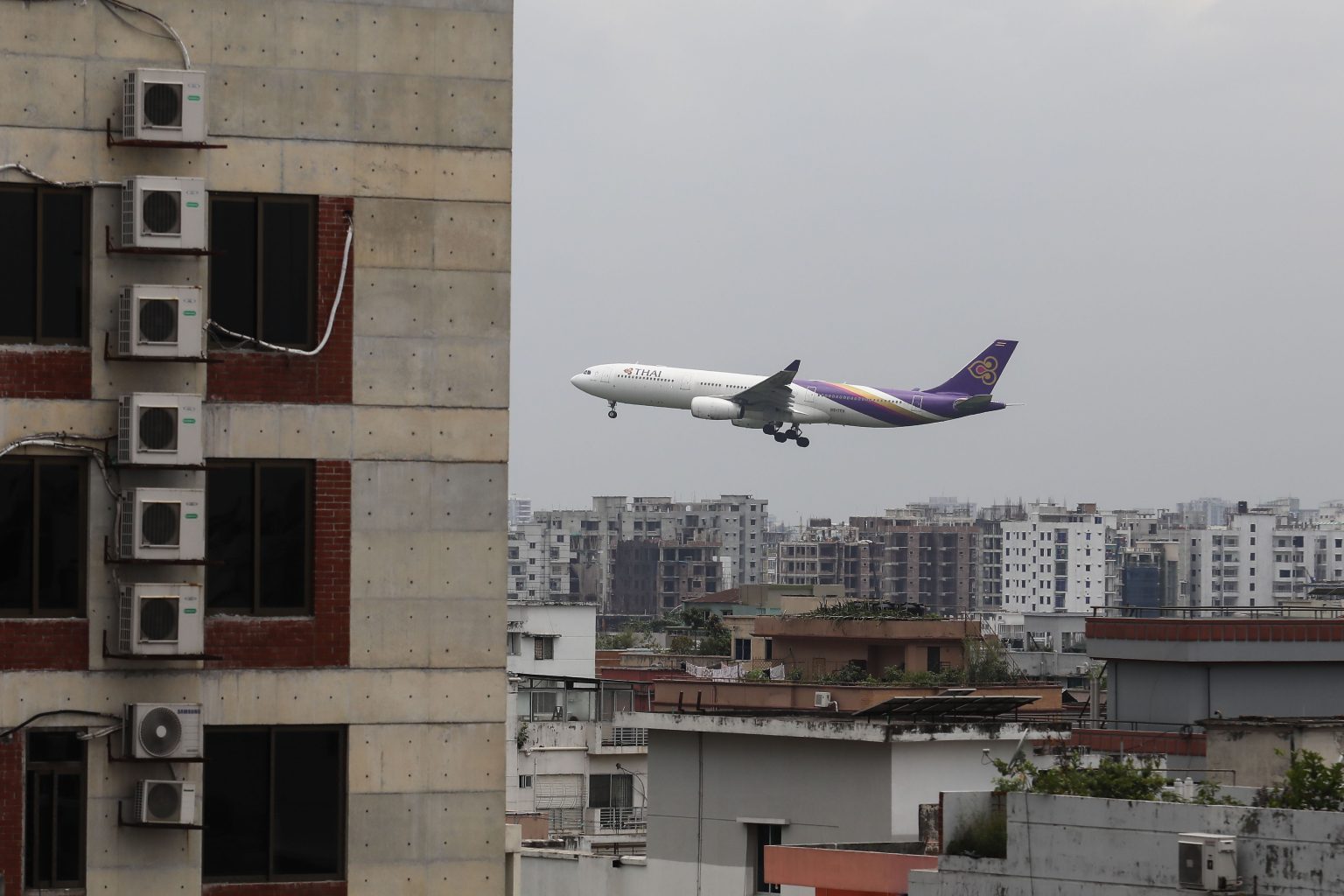Despite the world reacting with significant concern and calls for urgent safety reforms after the Air India accident, the Civil Aviation Authority of Bangladesh (CAAB) is facing challenges from another government entity to ensure safety, particularly in relation to the construction of high-rises around the Third Terminal of Hazrat Shahjalal International Airport.
Official sources confirmed that the CAAB has flagged the height of six buildings in privately-owned Priyanka City Housing near Uttara Diabari as a potential risk to aviation.
Following the assessment, it issued a letter, prompting Rajdhani Unnayan Kartripakkha (RAJUK)’s Zone-1 to conduct an investigation and submit a report.
However, an on-the-spot visit revealed that no visible action had been taken.
Air Vice Marshal Mohammad Manzoor Kabir Bhuiyan, Chairman of CAAB, expressed frustration over unnecessary delays. “They must take immediate action,” he told the Times of Bangladesh.
A TIMES investigation found that the CAAB Chairman sent a letter to the RAJUK Chairman on August 22, 2024, requesting that appropriate measures be taken concerning any irregularly constructed buildings to ensure safe takeoff and landing at the airport.
In response, RAJUK formed a six-member committee comprising representatives from CAAB, RAJUK itself, Survey of Bangladesh, and the landowners around the Third Terminal.
The committee reviewed the situation regarding the six buildings in Priyanka City in January 2025 and submitted a report.
“We have identified the risky structures and sent a letter to RAJUK. It is now up to them to take further action. There is no room for delays in this matter,” said the CAAB chairman.
He said that if RAJUK sends a reply, it will be promptly addressed.
Mohammad Hafizur Rahman, Director of RAJUK Zone-1, has not been available for comment, as he remains absconding due to the Purbachal plot scandal.
Engineer Mohammad Abil Ayam, authorised officer of RAJUK, told the Times of Bangladesh that the investigation committee has responded to CAAB after conducting inquiries and will take action as per further instructions.
RAJUK Zone-1 Inspector Badal Hossain said that the Uttara area was previously part of Zone-3 but was transferred to Zone-1 in August of last year. “The report on the six buildings was sent to CAAB, but no further instructions were provided from them despite repeated attempts.”
CAAB’s letter specifies that six buildings in Priyanka City Housing are under construction with the following heights: Plot 26 (7-storied, 80 feet), Plot 9 (7-storied, 80 feet), Plot 13 (8-storied, 90 feet), Plot 30 (8-storied, 90 feet), Plot 36 (8-storied, 90 feet), and Plot 51 (10-storied, 110 feet).
According to CAAB, the maximum allowable heights for these plots are: 35 feet for Plot 26, 36 feet for Plot 9, 46 feet for Plot 13, 44 feet for Plot 30, 56 feet for Plot 36, and 73 feet for Plot 51.
While the terminal was partially inaugurated in October 2023, full-scale operations are likely to begin by the end of this year upon finalizing operational agreements, staffing, and training.
The Third Terminal construction project at Shahjalal International Airport was approved by the Executive Committee of the National Economic Council (ECNEC) on October 24, 2017, with an estimated cost of Tk13,610 crore. However, the budget was later increased by an additional Tk7,788 crore, bringing the total cost to nearly Tk21,398 crore.
Construction began in December 2019.
Most of the funding for this project is being provided by the Japanese cooperation agency JICA, which is lending Tk16,141 crore. The remaining Tk5,258 crore is being provided by the Bangladesh government.
Air India crash: Safety concerns worldwide
Following the tragic Air India crash in Ahmedabad on June 12, which resulted in around 250 fatalities, the Indian Directorate General of Civil Aviation (DGCA) implemented new measures to tackle the dangers posed by high-rise buildings near airports.
These include the introduction of launching Aircraft (Demolition of Obstructions) Rules, 2025, which mandate the removal or reduction of the height of non-compliant structures within critical flight paths.
Aviation safety experts in different countries pointed out that tall buildings near airports could obstruct flight paths, increasing the risk of accidents during takeoff or landing. They stressed the importance of creating “clear zones” around airports to ensure there are no structures that could interfere with flight operations.
Various countries and their aviation authorities, including the Federal Aviation Administration (FAA) in the US and the Civil Aviation Authority in the UK, have called for a review of zoning laws surrounding airports.
Some countries have discussed strengthening regulations to prevent the construction of high-rises in areas that could compromise flight safety.


